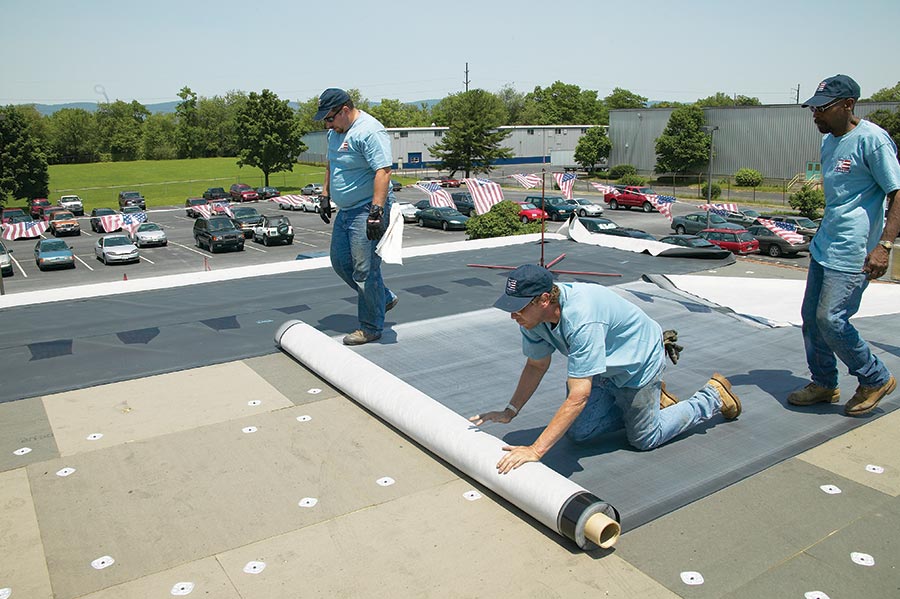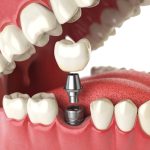Commercial roofing is a critical aspect of maintaining the structural integrity and functionality of commercial properties. Whether it’s an office building, retail store, or industrial facility, a sturdy and well-maintained roof is essential for protecting assets, ensuring safety, and maintaining energy efficiency. Understanding the importance of commercial roofing, the challenges it presents, and the benefits of professional roofing services is vital for business owners. In this article, we explore the intricacies of commercial roofing, highlighting the expertise of a professional roofing company in delivering quality solutions for commercial properties to get Roofing company.
- Introduction to Commercial Roofing
Commercial roofing encompasses a wide range of roofing systems designed for non-residential buildings. It serves as the first line of defense against the elements, providing protection from rain, wind, snow, and UV radiation. Recognizing the significance of commercial roofing, understanding different roofing systems, and considering key factors in roofing projects are essential for businesses.
Importance of Commercial Roofing:
Commercial roofing is crucial for safeguarding business assets, ensuring occupant safety, and maintaining the integrity of commercial properties. A well-installed and properly maintained roof protects against water damage, mold growth, energy loss, and structural deterioration, preserving the value and functionality of the building.
Types of Commercial Roofing Systems:
Commercial roofing systems vary in materials, design, and installation methods, catering to different building types, climates, and budget considerations. Understanding the characteristics and benefits of each roofing system aids in selecting the most suitable option for commercial properties.
Considerations for Commercial Roofing Projects:
Commercial roofing projects require careful planning, coordination, and execution to achieve optimal results. Factors such as building size, usage, location, and budget constraints influence decisions regarding roofing materials, installation methods, and maintenance strategies.
II. Installation and Maintenance of Commercial Roofing
Proper installation and regular maintenance are essential for maximizing the longevity and performance of commercial roofing systems. Professional roofing services ensure quality workmanship, adherence to industry standards, and proactive maintenance practices tailored to the specific needs of commercial properties.
Professional Installation Services:
Hiring a professional roofing company for commercial installations ensures expertise, quality materials, and compliance with building codes and regulations.
Expertise in Commercial Roofing:
- Professional roofers possess specialized knowledge and experience in commercial roofing systems, including flat roofs, low-slope roofs, and metal roofing. Their expertise enables them to assess project requirements accurately, recommend appropriate solutions, and execute installations with precision and efficiency.
Quality Materials and Techniques:
- Professional roofing companies use high-quality materials, advanced techniques, and state-of-the-art equipment to ensure durable and long-lasting commercial roofing systems. From membrane roofing to metal panels, they offer a wide range of options tailored to the specific needs and budget of each client.
Adherence to Building Codes and Regulations:
- Professional roofers adhere to local building codes, zoning regulations, and safety standards throughout the installation process. Compliance with regulatory requirements ensures the structural integrity, safety, and legality of commercial roofing projects, minimizing the risk of fines, penalties, or legal liabilities for businesses.
Routine Maintenance Practices:
Regular maintenance is essential for preserving the condition and performance of commercial roofing systems, minimizing the risk of leaks, damage, and premature failure.
Regular Inspections:
- Scheduled roof inspections by professional roofers help identify potential issues early, such as damaged seams, punctures, or deteriorating flashing. Early detection allows for timely repairs or corrective actions, preventing more extensive damage and costly repairs down the line.
Cleaning and Debris Removal:
- Regular cleaning of commercial roofs removes debris, leaves, and other organic matter that can trap moisture, promote mold growth, and compromise the integrity of roofing materials. Professional roofers use specialized equipment and techniques to safely and effectively clean commercial roofs, ensuring optimal performance and longevity.
Repairing Damage and Wear:
- Prompt repair of damaged or worn areas is essential for preventing water infiltration, structural damage, and energy loss. Professional roofers assess the extent of damage, recommend appropriate repair solutions, and implement repairs using quality materials and techniques, restoring the integrity and functionality of the roof.
III. Common Challenges in Commercial Roofing
Commercial roofing projects face various challenges, including weather and environmental factors, foot traffic, equipment installation, and aging and deterioration. Understanding these challenges and implementing proactive measures is essential for maintaining the durability and performance of commercial roofing systems.
Weather and Environmental Factors:
Extreme weather conditions, temperature fluctuations, and environmental factors pose significant challenges to commercial roofing systems.
Impact of Extreme Weather Conditions:
- High winds, heavy rain, hail, snow, and temperature extremes can damage roofing materials, compromise waterproofing, and accelerate wear and deterioration. Proper design, installation, and maintenance are essential for protecting commercial roofs against weather-related damage.
Environmental Considerations:
- Environmental factors such as UV radiation, pollution, and moisture can degrade roofing materials over time, leading to premature failure and reduced performance. Choosing durable and weather-resistant roofing materials, implementing proper maintenance practices, and addressing environmental stressors help prolong the lifespan of commercial roofing systems.
Foot Traffic and Equipment Installation:
Commercial roofs are susceptible to damage from foot traffic, maintenance activities, and the installation of HVAC units, solar panels, and other equipment.
Potential Damage from Foot Traffic:
- Frequent foot traffic on commercial roofs can cause punctures, tears, and abrasions to roofing materials, compromising their waterproofing and structural integrity. Implementing access restrictions, installing walkways, and using protective measures help minimize damage from foot traffic and preserve the condition of the roof.
Installation of HVAC and Other Equipment:
- Installing HVAC units, solar panels, and other equipment on commercial roofs requires careful planning and coordination to prevent damage to roofing materials and ensure proper waterproofing. Professional roofers work closely with contractors and equipment installers to ensure that penetrations are properly sealed, flashing is installed correctly, and structural integrity is maintained.
Aging and Deterioration:
As commercial roofs age, they become more susceptible to wear, deterioration, and structural weaknesses, necessitating proactive maintenance and timely repairs.
Effects of Aging on Roofing Materials:
- Over time, exposure to the elements, thermal expansion and contraction, and normal wear and tear can degrade roofing materials, weaken seams, and compromise waterproofing. Regular inspections and maintenance help identify signs of aging and deterioration, allowing for timely intervention and corrective actions to extend the lifespan of the roof.
Addressing Deterioration and Wear:
- Routine maintenance, repairs, and periodic roof assessments are essential for addressing aging-related issues such as cracked seams, blistering, granule loss, and membrane deterioration. Professional roofers assess the condition of the roof, identify areas of concern, and recommend appropriate repair or replacement solutions to restore the integrity and functionality of the roof.
IV. Benefits of Professional Roofing Services for Businesses
Professional roofing services offer numerous benefits for businesses, including safety and compliance, asset protection, and enhanced energy efficiency. Investing in professional roof maintenance and repairs ensures peace of mind, longevity, and performance for commercial roofing systems.
Ensuring Safety and Compliance:
Compliance with building codes, safety regulations, and industry standards is essential for protecting employees, customers, and assets, as well as avoiding legal liabilities and penalties.
Compliance with Building Codes:
- Professional roofers are well-versed in local building codes, zoning regulations, and industry standards governing commercial roofing installations and repairs. By adhering to these requirements, they ensure that roofing projects meet safety, structural, and environmental standards, minimizing the risk of compliance issues and regulatory violations for businesses.
Safety for Employees and Customers:
- Safety is a top priority for professional roofing companies, who implement strict safety protocols, training programs, and equipment to protect workers, occupants, and bystanders during roofing projects. By prioritizing safety, they create a secure working environment and minimize the risk of accidents, injuries, or property damage.
Protecting Investments and Assets:
Commercial roofs are significant investments that require proactive maintenance, timely repairs, and proper care to preserve their value and functionality over time.
Preservation of Property Value:
- A well-maintained and properly functioning roof enhances the value, curb appeal, and marketability of commercial properties, attracting tenants, customers, and investors. Regular roof maintenance, repairs, and inspections help preserve the property’s value and protect the owner’s investment in the long term.
Minimization of Repair Costs:
- Proactive maintenance and timely repairs help prevent minor issues from escalating into major problems that require costly repairs or premature roof replacement. By addressing issues promptly, professional roofers minimize downtime, disruption, and expenses for businesses, ensuring cost-effective solutions and long-term savings.
Enhancing Energy Efficiency:
Proper insulation, ventilation, and roofing materials contribute to the energy efficiency and sustainability of commercial buildings, reducing utility costs and environmental impact.
Proper Insulation and Ventilation:
- Professional roofers assess the insulation and ventilation needs of commercial buildings, ensuring proper airflow, moisture control, and thermal performance. By optimizing insulation levels, installing energy-efficient roofing materials, and improving ventilation systems, they help businesses reduce heating and cooling expenses and enhance indoor comfort and air quality.
Reduction of Energy Costs:
- Energy-efficient roofing materials such as cool roofs, reflective coatings, and insulated membranes help reduce heat absorption, minimize solar heat gain, and lower cooling demands during hot weather. By enhancing the energy efficiency of commercial buildings, professional roofers help businesses save money on utility bills, lessen environmental impact, and achieve sustainability goals.
V. Conclusion
Commercial roofing is a critical component of building maintenance and property management, requiring careful planning, professional expertise, and proactive maintenance to ensure longevity and performance. By investing in professional roofing services, businesses can protect their assets, ensure safety and compliance, and enhance energy efficiency, ultimately reducing costs and maximizing the value of their commercial properties. Contacting a reputable roofing company for expert solutions tailored to the unique needs of commercial buildings is essential for achieving long-term durability, reliability, and peace of mind. Prioritizing commercial roofing maintenance and repairs is an investment in the future success and sustainability of your business.











Leave a Reply